Industrial Hygiene Testing
The Law requires employers to take all measures reasonably necessary to protect workers from exposure to hazards in the workplace. This includes biological or chemical agents that could be ingested, inhaled or absorbed via the skin, as well as noise and vibration.

Noise & Vibration Surveys
Employers must take steps to protect workers from overexposure to noise, which can lead to undesirable effects, from tinnitus (ringing in the ears), to irreversible hearing loss. Although not mandated for every workplaces, indications that you may need to have a noise survey done include worker complaints regarding noise, and needing to raise your voice to be heard over background noise.

Air Quality Sampling
Employers are responsible to ensure that air in the workplace is of good quality. Chemical off-gassing from building materials or exposure to microbial contaminants (funig, bacteria) can cause clinical symptoms, including headaches, allergies, skin rashes, nausea, and shortness of breath. Using specialized equipment, qualified industrial hygienists collect samples from the areas of concern and work with an accredited lab to determine the presence and concentration of airborne chemical or biological hazards.

Designated Substances
In workplaces where designated substances exist, with the exception of contruction projects, the employer must carry out an assessment to determine the risk of worker exposure. Samples are collected by a qualified technician from the air or from building materials (ie. isulation, piping). A complete lab analysis is done to determines the presence and concentration of designated substances, such as asbestos or lead.
11 Designated Substances
1. Acrylonitrile
2. Arsenic
3. Asbestos
4. Benzene
5. Coke oven emissions
6. Ethylene oxide
7. Isocyanates
8. Lead
9. Mercury
10. Silica
11. Vinyl chloride
An employer shall carry out an assessment of the exposure or likelihood of exposure of a worker to a designated substance in the workplace and record it in writing.
O. Reg. 490/09, s. 19 (1)
Occupational Exposure Limits (OELs) restrict the amount and length of time a worker is exposed to airborne concentrations of hazardous biological or chemical agents.
Exposure Monitoring
Exposure monitoring quantifies or qualifies the level of risk with respect to hazardous substance in the workplace. In other words, it tells you whether the concentration and duration of a given hazard are within acceptable exposure limits. This type of exposure testing then can also be referred to as occupational hygiene testing.
The Importance of Testing
Human senses cannot accurately detect hazardous substances and are not a reliable means of determining concentration levels. Professional help is needed to ensure accurate and reliable testing methods. Professionals who specialize in this type of testing hold the designation of Occupational or Industrial Hygienist (IH).
750 plus
There are over 750 biological or chemical agents for which the province of Ontario has set exposure limits. For ease of reference, you can find the full table, organized alphabetically, here:
Current Occupational Exposure Limits for Ontario Workplaces Required under Regulation 833
Occupational Hygiene Testing in 3 Easy Steps:

Assessment
Site visit for sample collection, followed by laboratory analysis

Report
Documentation interpreting the results of the lab analysis, including type, species, and concentration (as applicable)

Recommendations
Reccommendations for next steps to address deficiencies
Free Discovery Call
Everyone can use a bit of free advice! If you’re not sure what next steps to take, or just need an expert opinion, we’d love to hear from you. Fill out the contact form to the right and we’ll be happy to reach out. Even better, give us a call!